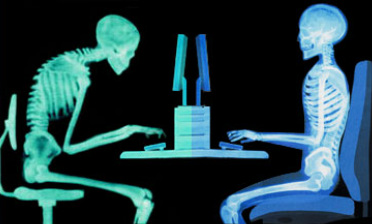We are always been told how prolonged sitting is for us. It is the new smoking of the era. It affects our health. Chances are, if you sit at a desk all day, then you already know it can make you feel tight and sluggish not to mention the deeper impacts it can possibly have on your health. The thing is, sitting is so part of our life it is unavoidable. The vast majority of jobs in today’s world involve sitting at a desk and/or a computer. So, what we need is strategies that can help to combat those negative effects of working at a desk.
Here are seven ‘deskercises’ that will take roughly 15 minutes and will help focus on the strength and mobility.
Exercises for better mobility and strength at the desk
These exercises are useful for the office situation and target those tight shoulders and hips that come with the territory of working at a desk all day. The best part of these exercises is that they can be done right there at your desk and they need no special equipment except a desk and a chair. So, there is no excuse that they cannot be added into your daily routine.
1. Chest Opener Chair Exercise
* Sit on the front of your chair and reach your hands back to hold onto the sides of the chair
* Pull your elbows back and squeeze your shoulder blades back and down, as your chest moves forward
* Repeat 10 times, then on the last rep, lift your chest and hold for 15 seconds
2. Upper Thoracic Extension
* Sit on the front edge of the chair, and lean forward, keeping your back flat.
* Place your elbows on the desk in front of you, and press them into the desk as you try and extend your thoracic spine
* Repeat 10 times, then on the last rep, lift your chest and hold for 15 seconds
3. Office Chair Dips
* Hold onto the front edge of the chair (a chair that is stable and will not move on you) so that your butt is off the chair, and your feet planted firmly on the ground
* Bend you elbows and lower your butt toward the ground. As you lower keep you chest up and your elbows pointing backwards not out the side
* Repeat 10 times
4. Hip Flexor Chair Stretch
*Move your body to one side of the chair and extend that side leg behind you so that the knee is pointing to the ground
*In this position you will be in a supported line position, with the front leg bent to 90 degrees, and that hip supported
* Lift your chest up and squeeze your rear glute/butt. You start to feel a nice stretch in the rear hip flexor
* Hold for 30 seconds, then repeat on the other side
5. Sitting Chair Rocks
* Sit at the front of chair, feet planted firmly on the floor and with an upright posture
* Whilst in the position rock your pelvis forward and back slowly. The idea is to create posterior pelvic tilt and then anterior pelvic tilt.
* Next bend yourself to the left and then to the right. Trying to bend at the low back not the whole body. This movement is quite small depending on your flexibility.
* Perform this each movement for 1 minute in both directions
6. Rocking Squat Desk Exercise
* Squat down as low as you can comfortably can go. You can hold onto the desk to help you balance and keep the chest up.
* Whilst holding onto the desk rock forward onto the balls of your feet, then rock back into the squat.
* This movement should feel comfortable throughout the whole motion, so feel free to round your back as you are in this squat.
* Repeat 10 times.
7. Side-to-side Desk Squats
* Stand in front of your desk with your feet as wide as you can comfortable can take them.
* Whilst holding your desk for support, lean your body in one direction, bending the knee in the direction you are leaning (The heel of this foot needs to stay on the ground). The opposite leg stays straight with the toes turning upwards, so they point towards the ceiling.
* Whilst in this position move to the other side so that you reverse the position that you are in. You should feel the stretch of the straight leg and the glue working on the bending leg.
* Repeat 10 times on both sides
There is no wrong way to utilize this office routine but trying to do it at least three times per day is going to be excellent. Setting a reminder on your phone can help. By adding regular movement in to our everyday lives, you feel and move better. And if you incorporate it into regular training outside of your work day, you may even find yourself performing better in your other training goals as well.
Working through these office exercises will start to help build the foundation of strength, mobility, and body control that makes you feel better, and move better in whatever you choose to do.
If you would like more information or would like to book an appointment at Neurohealth call the clinic on 9905 9099 or email us admin@neurohealthchiro.com.au. You can also fill in the contact form on our website www.neurohealthchiro.com.au




